Birding in Hampi
Hampi is a historically and culturally significant site located in the state of Karnataka, India. It was the capital of the Vijayanagara Empire during the 14th to 16th centuries and is now recognized as a UNESCO World Heritage Site. Hampi is known for its magnificent ruins, ancient temples, and impressive architectural structures. But we visit all the ruins only for birdwatching including Angkor Wat temple in Cambodia.
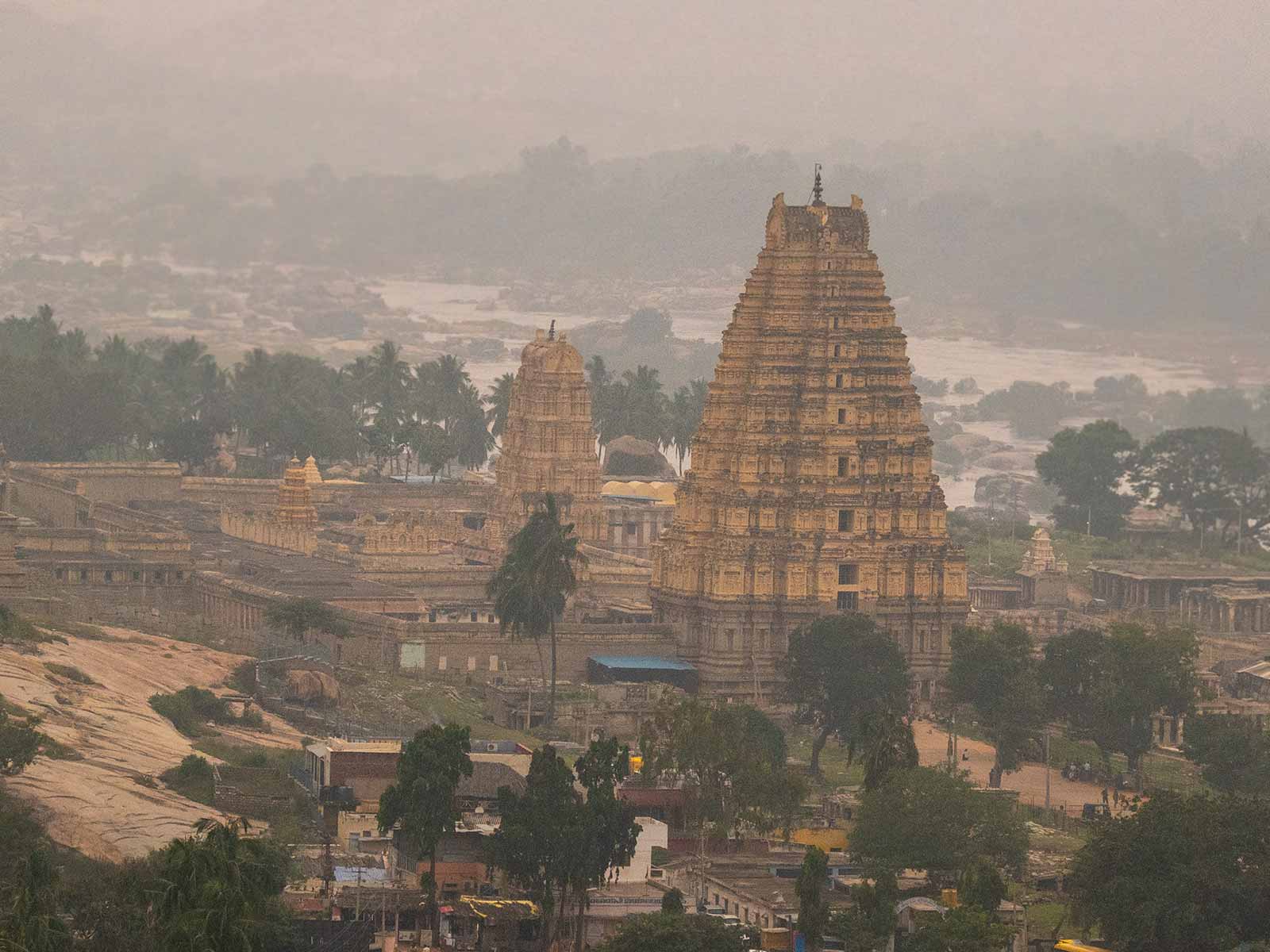
The cultural heritage of Hampi is truly remarkable. The site is dotted with numerous temples and also houses the remains of royal structures like the Queen’s Bath, the Lotus Mahal, and the Elephant Stables, which provide insights into the opulent lifestyle of the Vijayanagara kings and queens. The diverse landscape, including rivers, rocky outcrops, and agricultural fields, provides a variety of habitats for different bird species. We thought there will be an entry ticket process like in Angkor wat and checked with the Karnataka tourism hotel where we stayed. The receptionist responded that there is no entry fee and the temple site is open all the time for the public. We were thrilled and decided to walk to the nearest ruin. It was already past 4’o clock in the evening when we reached the first ruin where we saw only few tourists.
Spotting Painted Sandgrouse
The goat herders were herding their goats and there were few structures which was nice to look at in the evening light. There were huge boulders where vinod started searching for geckos. During that search, he spotted a slight movement in the bushes. On a closer look through binocular, he identified the source of the movement which was the “Painted Sandgrouse”. There was a pair and they immediately took off to land on the nearby boulder.
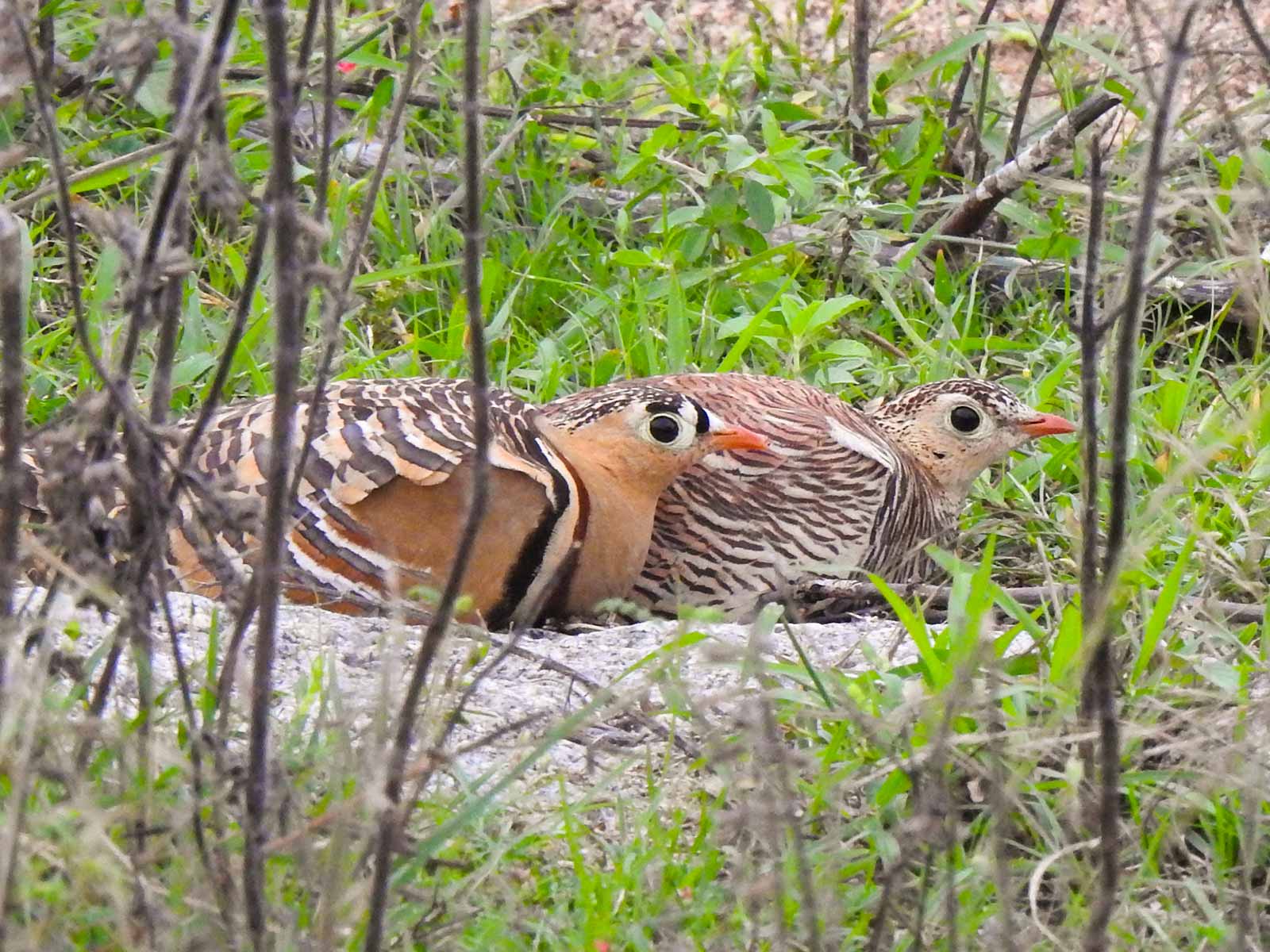
Even though we continuously tracked the movements of those birds, we couldn’t spot the birds immediately. Only after a few minutes search, we spotted the well camouflaged birds. The Painted Sandgrouse is a fascinating bird species with its specialized adaptations for arid environments and a lifer for us. We felt the same excitement we had when we saw the Chestnut-bellied sandgrouse for the first time in Rajasthan. A woman goat herder was curiously watching us as we were totally in the opposite direction to the ruins where few energetic tourists were taking photographs. We just smiled at her and enjoyed the sun casting its golden glow on the boulder and the birds, creating a truly enchanting scene.
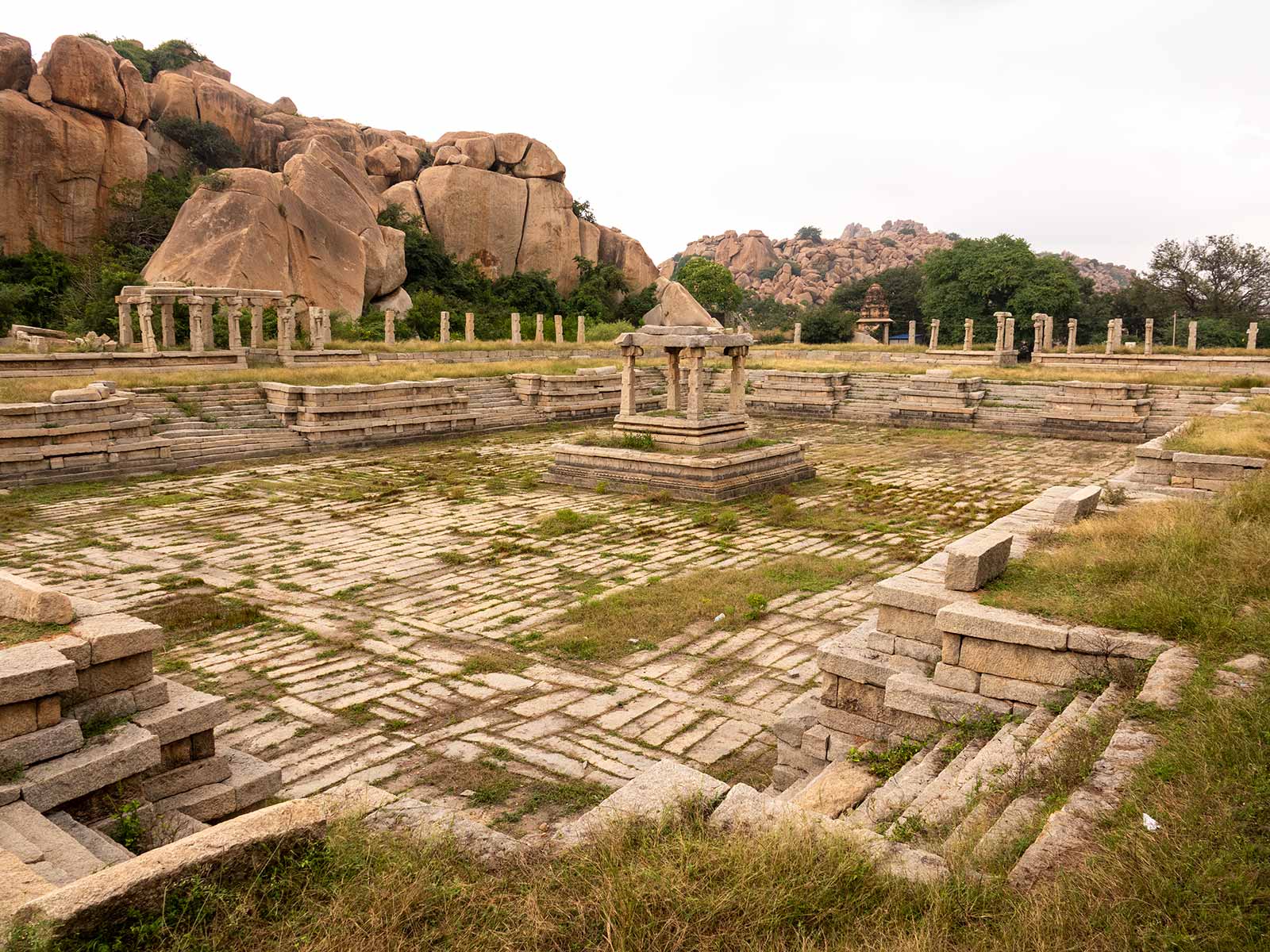
Next day early morning we ventured out to the Lotus temple section. We were welcomed by White-naped woodpecker pecking on the transformer pole. Even the tourist sites are usually less occupied in the early mornings. So, we just enjoyed our private walk around the Lotus mahal.

In the stunning morning light, we encountered an abundance of Blue rock thrushes, taking advantage of the rocky outcrops and boulder-strewn landscapes that served as their ideal habitat. Their presence was a frequent and delightful sight, adding to the natural beauty of the surroundings. We were expecting a harsh sunny day in Hampi, so we quickly moved to the next location where we had to climb uphill.
Surprisingly, the weather turned out to a drizzly dull weather. We started walking uphill but we stopped almost immediately as I spotted a pair of Painted spurfowl sitting openly on a rock. After taking as many pictures as possible without disturbing them, we continued our walk. But we stopped again when we saw a small flock of Yellow-throated bulbuls flying around a bush which was full of berries. We were thrilled to spot three uncommon birds when we were just doing casual birdwatching. As the weather was very pleasant, we reached the top of the hill quickly and enjoyed the view of Tungabhadra river.
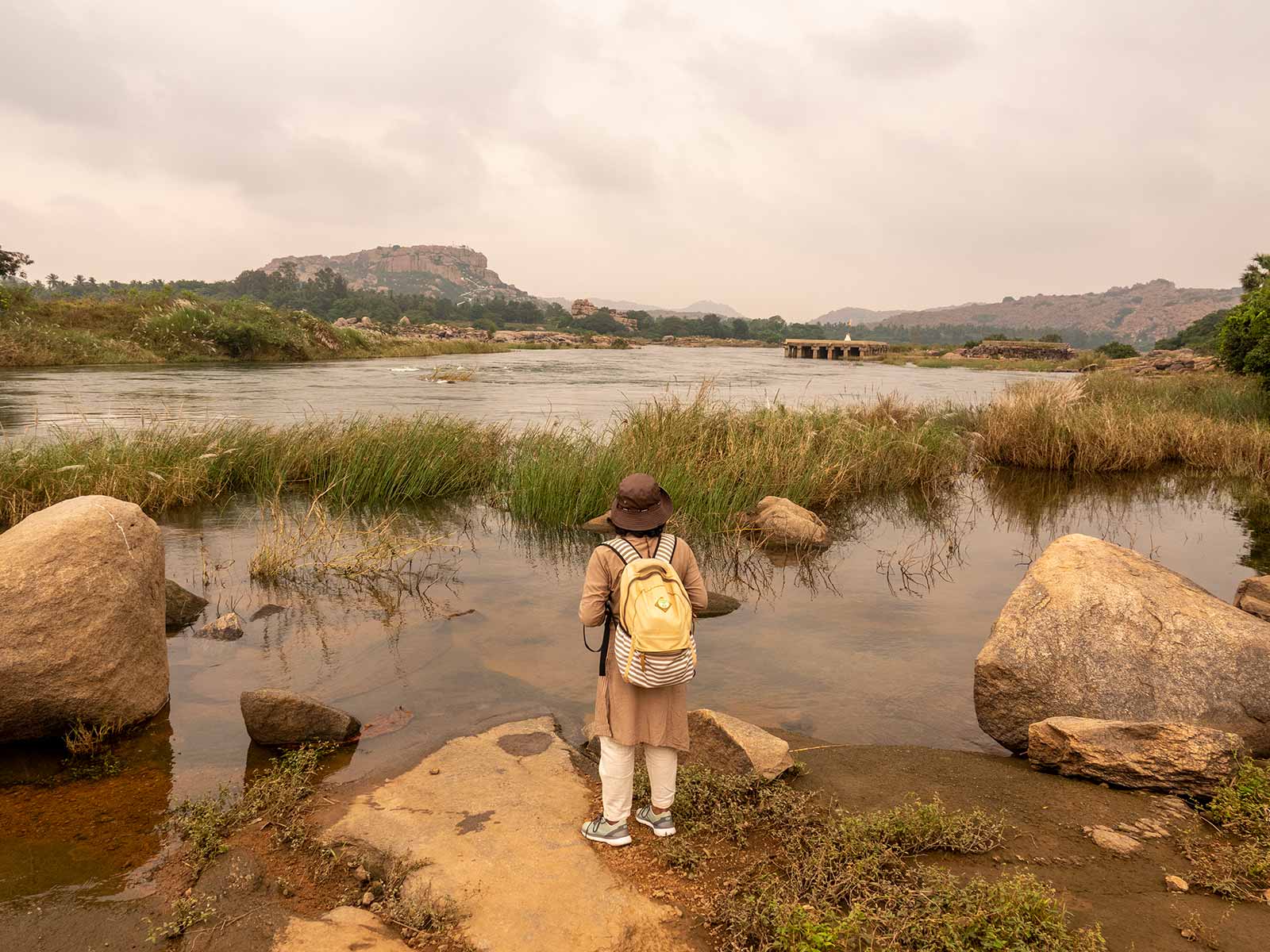
We drove to few other sites and we saw Bonelli eagle, Kestrel, Indian silverbill, Yellow-eyed babbler during the drive. We made frequent stops in our car to indulge in bird watching. By 3 P.M it started raining heavily and we returned to our hotel room. The hotel room had a good view of a large fig tree and we enjoyed the sight of the Indian grey hornbills and Yellow-footed green pigeons ravenously eating the fig fruits in the rain, while we were eating hot snacks in the room.
After a night of rainfall, the next morning, we headed to the riverbed of Tungabhadra for our birdwatching expedition. Due to the rainfall, the rocks had become slippery, prompting us to proceed with caution, carefully considering each step we took.
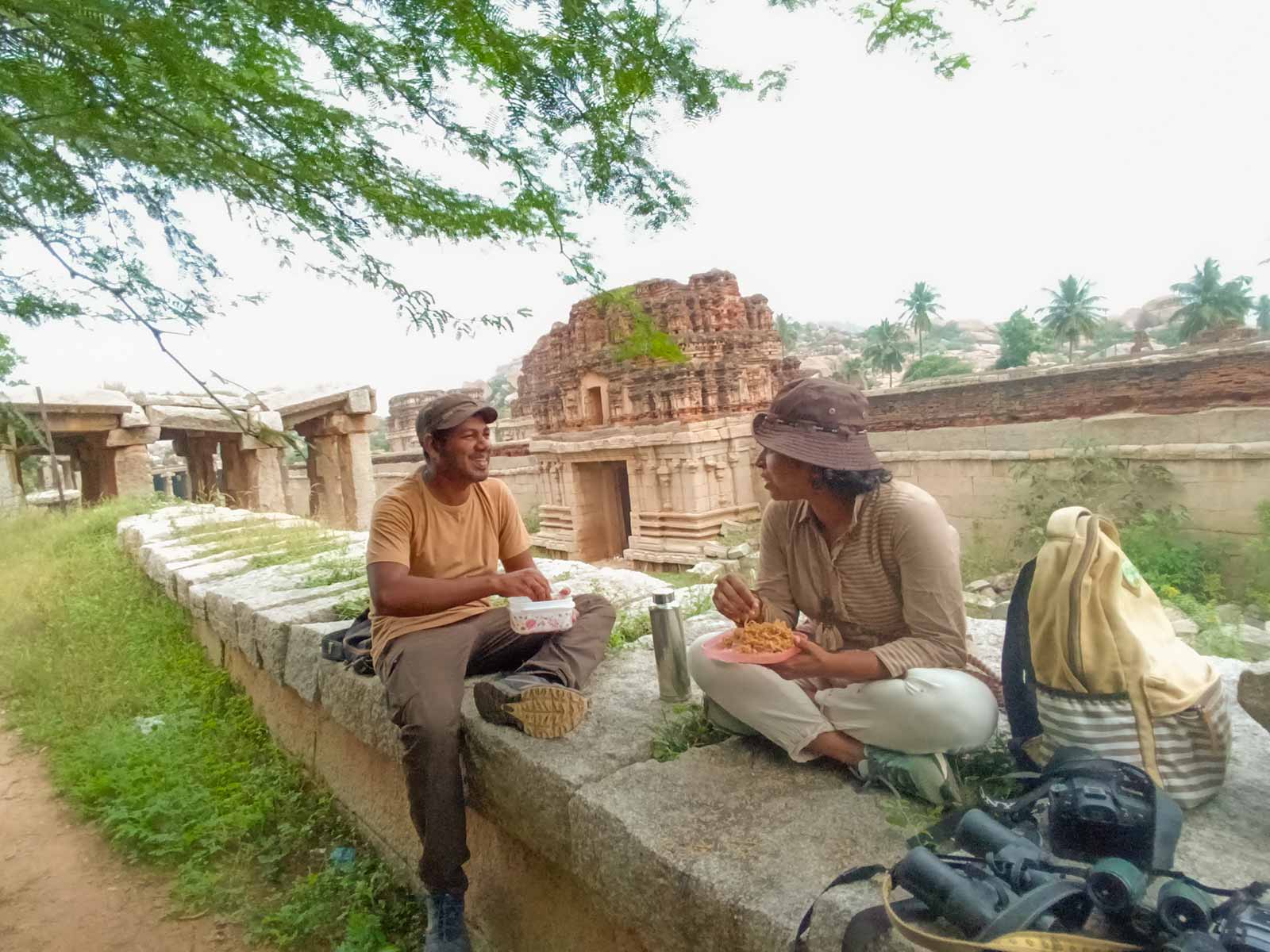
The riverbank itself was lined with an array of lush vegetation, such as tall grasses and swaying trees. Regrettably, the majority of riverbanks in India have been encroached upon by human activities, resulting in the loss of the serene and tranquil essence that riverbanks naturally possess. We were delighted in the unspoiled beauty of the Tungabhadra riverbank, where human activities had not infringed, allowing the River terns, Great cormorants, and Oriental pratincoles to flourish undisturbed in their vibrant ecosystem along the Tungabhadra river.
Daroji Bear Sanctuary
There are many interesting areas in the surroundings , including the Daroji Bear Sanctuary , which is home to the endemic and endangered sloth bears. Opting for the evening hours, known to be ideal for bear sightings, we made our way to the sanctuary. The route took us through villages and sprawling farmlands, where we noticed the cultivation of pomegranate plants in close proximity to the sanctuary. Considering the bears’ heightened sense of smell, we speculated that this could potentially have a detrimental effect. While the sanctuary did not offer a plethora of bird sightings, we found solace in observing the enchanting sight of a tranquil bear mother lazily tending to her adorable cubs.
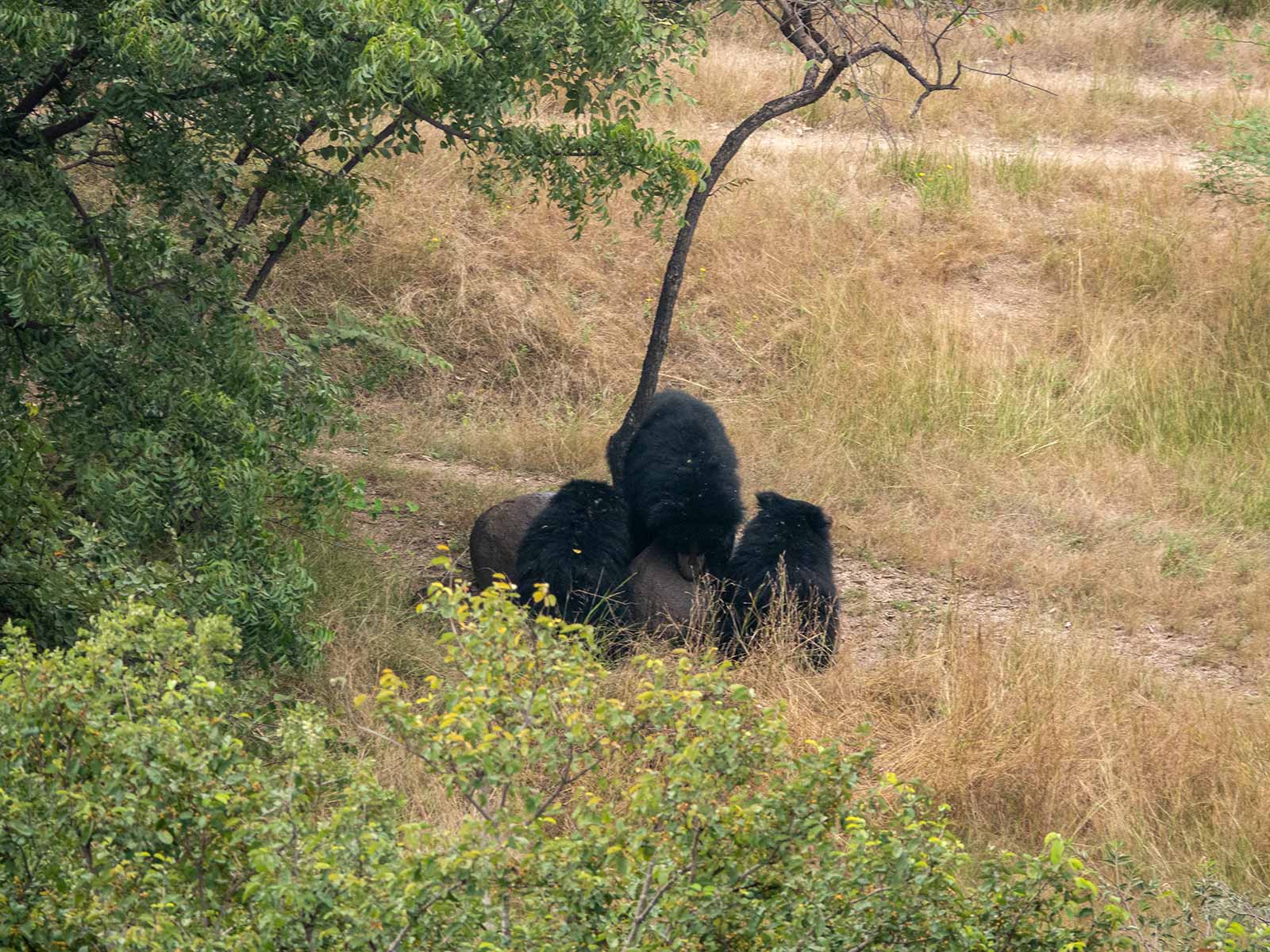
During our return journey from the sanctuary, we made a stop at a farmland to witness a remarkable gathering of Munias and weavers. Their synchronized movements as they fed on grass seeds and gracefully soared through the evening sky created a captivating spectacle, enhanced by the ethereal glow of the setting sun.
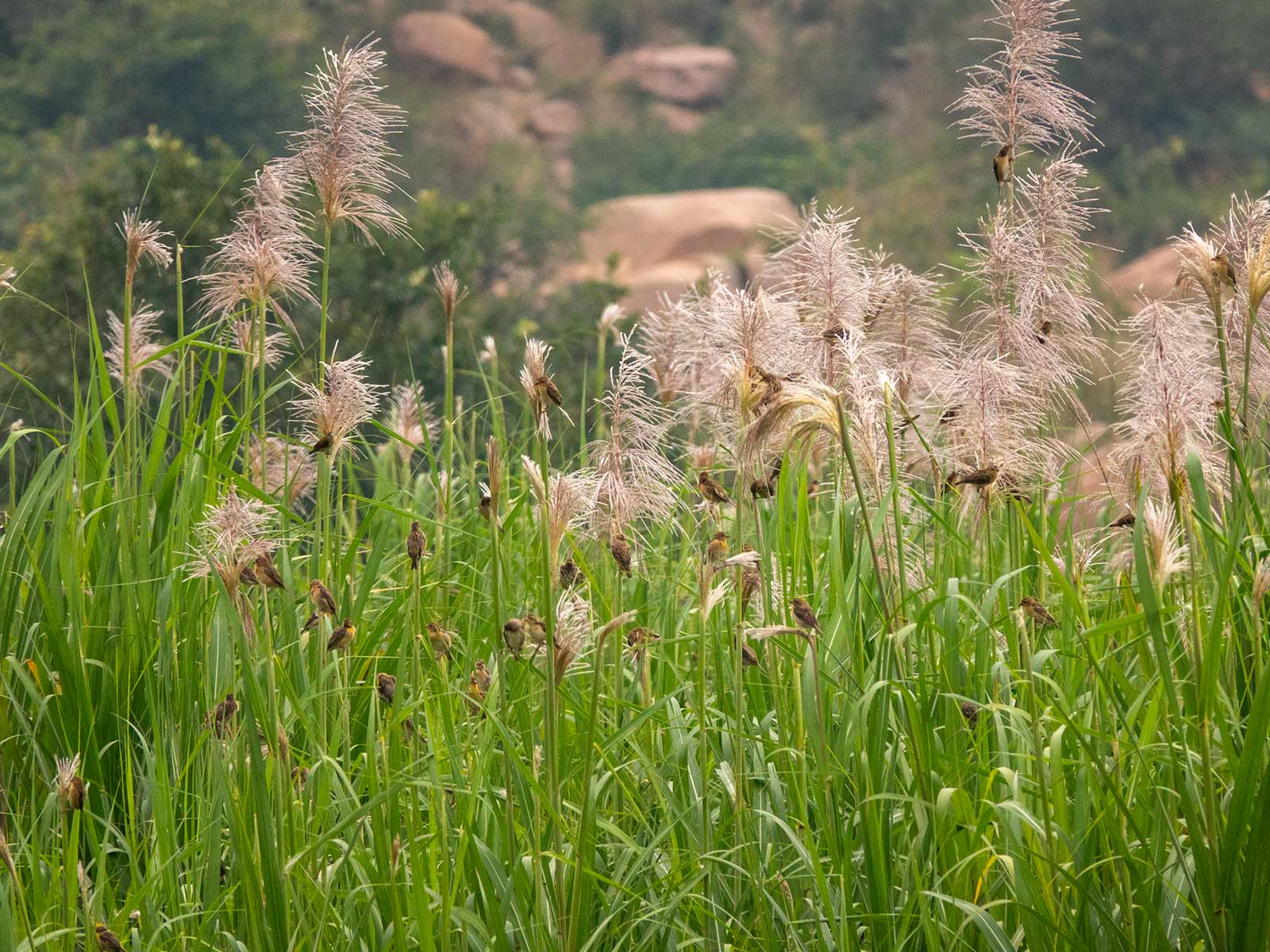
It was a captivating sight that left us in awe. Our visit to Hampi for birdwatching exceeded our expectations, and we departed with a profound sense of delight from our remarkable birdwatching experience in this remarkable place. Overall, Hampi offers a unique blend of cultural heritage and natural beauty, making it a captivating destination for both history enthusiasts and bird lovers alike.